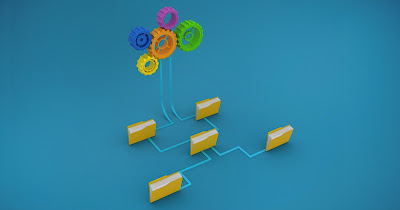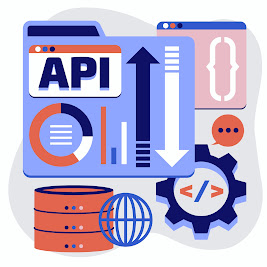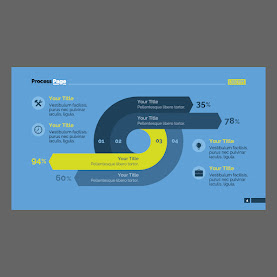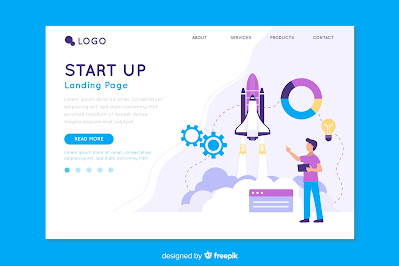Introduction:
As the world moves deeper into the age of artificial intelligence (AI) and machine learning (ML), the demand for powerful, flexible, and efficient tools to build and deploy machine learning models continues to rise. One such tool that has become synonymous with AI development is TensorFlow. Developed by Google Brain and released as an open-source framework, TensorFlow has quickly become the go-to platform for researchers, data scientists, and developers who want to create and train machine learning models.

In this comprehensive article, we will explore what TensorFlow is, how it works, its key features, how it is used in real-world applications, and why it remains one of the most popular machine learning frameworks today. By the end of this guide, you will have a clear understanding of why TensorFlow is a critical tool in the AI and machine learning landscape and how you can leverage it for your projects.
What Is TensorFlow?
Fundamentally, TensorFlow is an open-source machine learning platform. It provides a comprehensive ecosystem of tools, libraries, and community resources for developing and deploying ML models across various platforms, from cloud servers to edge devices like smartphones.

TensorFlow was first released by Google Brain in 2015, primarily to serve as an internal tool for improving Google services such as search, translation, and image recognition. Since its release, TensorFlow has grown significantly and now supports a wide range of machine learning and deep learning tasks, including:
*. Neural Networks for deep learning
*. Natural Language Processing (NLP)
*. Image Recognition
*. Time Series Analysis
*. Reinforcement Learning
TensorFlow’s name stems from its use of data flow graphs, where “tensors”, or multi-dimensional arrays, move between nodes in the graph. These nodes represent mathematical operations, and the edges represent the data (tensors) that flow through the system.
Key Features of TensorFlow:
TensorFlow’s popularity can be attributed to its rich set of features that make it easy to develop, train, and deploy machine learning models at scale. Here are some of the most significant features that set TensorFlow apart from other frameworks:
1. End-to-End ML Platform:
TensorFlow provides an end-to-end platform for machine learning, meaning it covers every aspect of the ML pipeline, from model building to deployment. This includes:
Model building: TensorFlow offers high-level APIs like Keras for quick development, as well as low-level APIs for more control.
Training: TensorFlow supports distributed computing, allowing large models to be trained across multiple GPUs or TPUs.
Deployment: TensorFlow models can be deployed on various platforms, including mobile devices, web applications, and cloud services.
This all-encompassing nature makes TensorFlow a favorite for both beginners and advanced users.
2. Keras for High-Level API:
Although TensorFlow is a powerful low-level tool, it provides the Keras API as a high-level interface. Keras is user-friendly, making it easy to build and experiment with neural networks. With Keras, developers can quickly prototype models using fewer lines of code, while still having the option to dig into TensorFlow’s more complex features when needed.

3. TensorFlow Extended (TFX):
TensorFlow Extended (TFX) is a production-ready end-to-end platform for deploying machine learning pipelines. It includes components for:
Data validation: Ensures that the data used is clean and consistent.
Model analysis: Evaluates model performance.
Model serving: Deploys models to production environments.
TFX is particularly useful for organizations that need to deploy models at scale and maintain ongoing ML operations.
4. TensorFlow Hub:
TensorFlow Hub is a repository of pre-trained models that developers can use to speed up their projects. Instead of training models from scratch, developers can leverage these pre-trained models and fine-tune them for their specific needs. This is especially useful for tasks like image classification, text embedding, and object detection.
5. Support for Multiple Platforms:
One of TensorFlow’s standout features is its ability to run on various hardware and platforms. Whether it's running on a cloud-based server, local GPUs, or even on mobile devices (via TensorFlow Lite), TensorFlow is designed to be platform-agnostic, making it an ideal choice for developers who want to deploy models across different environments.
TensorFlow Lite: Mobile and edge device optimized.
TensorFlow.js: Allows developers to run TensorFlow models directly in the browser using JavaScript.
TensorFlow Serving: It is a versatile, high-performing machine learning model serving solution built for commercial settings.
6. TensorFlow 2.x:
The release of TensorFlow 2.0 brought significant improvements in usability and performance. Some of the key changes include:

Eager execution by default: This allows operations to be executed immediately, making debugging easier and improving model development workflows.
Simplified APIs: TensorFlow 2.x refines the API structure, making it easier to understand and use.
Keras as the default high-level API: TensorFlow fully embraces Keras for rapid prototyping and model development.
7. Customizable and Flexible:
TensorFlow is incredibly flexible, allowing users to customize models and systems to suit their specific needs. For example, users can define custom layers, loss functions, and optimizers, making TensorFlow suitable for both research and production-level tasks.
How TensorFlow Works: The Basics:
At the heart of TensorFlow is the concept of tensors and data flow graphs. Let’s break down how these two concepts function within the framework:
1. Tensors:
In TensorFlow, the basic unit of data is called a tensor. Tensors are multi-dimensional arrays (or matrices) that represent the data that flows through a machine learning model. A tensor’s rank refers to the number of dimensions it has:
*. Rank 0: A scalar (e.g., 5)
*. Rank 1: A vector (e.g., [1, 2, 3])
*. Rank 2: A matrix (e.g., [[1, 2], [3, 4]])
*. Rank 3 and higher: Multi-dimensional arrays
2. Data Flow Graphs:
TensorFlow uses data flow graphs to represent computations as a series of connected operations. Each node in the graph represents an operation, and the edges between nodes represent the tensors (data) that flow between them. This graph-based approach is highly efficient for large-scale neural networks and distributed computing.

By structuring computations as graphs, TensorFlow can optimize model performance by parallelizing operations across multiple CPUs, GPUs, or TPUs.
3. Eager Execution Mode:
Eager Execution is enabled by default in TensorFlow 2.x. This mode allows operations to be executed immediately as they are called, without needing to build a data flow graph first. This makes TensorFlow more intuitive and easier to debug, especially for those familiar with Python’s standard programming model.
Real-World Applications of TensorFlow:
TensorFlow is used in a wide variety of domains, from healthcare to finance to entertainment. Here are some notable real-world applications of TensorFlow:
1. Image and Video Recognition:
TensorFlow is widely used for tasks such as image classification, object detection, and facial recognition. Companies like Google, Facebook, and Amazon use TensorFlow-powered models for image search, caption generation, and video analytics.

For example, Google Photos uses TensorFlow’s deep learning models to automatically tag and categorize images.
2. Natural Language Processing (NLP):
TensorFlow is a popular choice for NLP tasks like translation, text classification, and speech recognition. Google Translate, for instance, utilizes TensorFlow models to provide accurate and real-time language translations.
Moreover, TensorFlow’s Seq2Seq models are used to power many chatbot applications and virtual assistants.
3. Healthcare:
With its applications in medical image analysis, patient outcome prediction, and even drug discovery, TensorFlow is making major advances in the healthcare sector. TensorFlow models can analyze X-rays, MRI scans, and other medical images to assist doctors in diagnosing diseases like cancer.
4. Autonomous Vehicles:
The development of self-driving cars relies heavily on TensorFlow for tasks such as object detection, lane detection, and real-time decision-making. Companies like Tesla and Waymo (a subsidiary of Alphabet) are known to use TensorFlow in their AI pipelines for autonomous driving technologies.
5. Recommendation Systems:
TensorFlow is also widely used in building recommendation engines for platforms like YouTube and Netflix. By analyzing user behavior and preferences, TensorFlow models can provide personalized recommendations for videos, products, and other content.
Getting Started with TensorFlow
To start building with TensorFlow, follow these basic steps:

1. Install TensorFlow:
TensorFlow can be installed using Python’s package manager, pip:
bash
Copy
pip install tensorflow
For GPU support, you’ll need to install the GPU version of TensorFlow:
bash
Copy
pip install tensorflow-gpu
2. Build a Simple Neural Network with Keras:
Here’s an example of how to build a simple neural network using TensorFlow’s high-level Keras API:
python
Copy
import tensorflow as tf
from tensorflow.keras import layers, models
# Load dataset (e.g., MNIST)
mnist = tf.keras.datasets.mnist
(x_train, y_train), (x_test, y_test) = mnist.load_data()
# Normalize the data
x_train, x_test = x_train / 255.0, x_test / 255.0
# Build a simple neural network model
model = models.Sequential([
layers.Flatten(input_shape=(28, 28)),
layers.Dense(128, activation='relu'),
layers.Dropout(0.2),
layers.Dense(10, activation='softmax')
])
# Compile the model
model.compile(optimizer='adam',
loss='sparse_categorical_crossentropy',
metrics=['accuracy'])
# Train the model
model.fit(x_train, y_train, epochs=5)
# Evaluate the model
model.evaluate(x_test, y_test)
This simple model classifies images from the MNIST dataset, which contains handwritten digits.

Conclusion:
TensorFlow has established itself as one of the most powerful and versatile tools in the machine learning and AI landscape. With its comprehensive ecosystem, support for multiple platforms, and user-friendly APIs, TensorFlow enables developers and researchers to build scalable and efficient machine learning models with ease.
Whether you’re building deep learning models for image recognition, natural language processing, or any other AI-driven application, TensorFlow is an invaluable tool that can help you bring your projects to life. By leveraging its robust features and active community, you can stay ahead of the curve in the rapidly evolving world of machine learning and artificial intelligence.








0 Comments